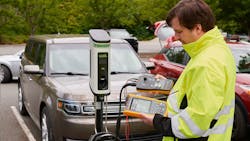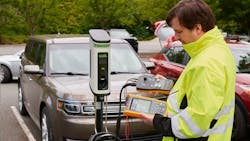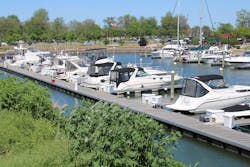The Most Notable Changes to the 2023 NEC Explained
Every three years, the NFPA issues a new edition of NFPA 70, National Electrical Code (NEC). The latest update was released in August 2022 and adopted in some areas as early as January 1, 2023. It was reorganized to make it easier to find what you need and features some intriguing new specifics related to emerging practices, trends, and technologies. Here are five categories that contain the most impactful changes:
Residential: Section 210.52
- Receptacles are no longer required on kitchen islands or peninsulas; however, you do need to build in accommodations to add a receptacle later.
- Receptacles under countertops are no longer allowed for countertop purposes. This is designed to help reduce the thousands of emergency room visits each year resulting from cooking appliances that are accidentally pulled off the counter by cords connected to under-counter outlets.
- Wall space behind “stationary appliances” is not considered in calculating receptacle layouts. While most electricians assumed wall space measurements for electrical outlet layouts stopped at stationary appliances, such as a range or cooktop, Sec. 210.52(A) makes it official.
Commercial: Sections 230.67 and 215.18
The 2023 NEC expands occupancy types for surge protector requirements. The 2023 Code adds dormitory units, guest rooms/suites of hotels/motels, and patient sleeping rooms of nursing homes and limited-care facilities to the existing “dwelling units” that require surge protective devices (SPDs). The SPD must be part of or adjacent to the service equipment unless an SPD is provided at each feeder-supplied panel board. In that case, an SPD is not required at the service equipment location. A related change in Sec. 215.18 states that an SPD is required for each feeder-supplied panelboard supplying any of those occupancies. This is a big change for hotel and motel design because it could mean adding hundreds of SPDs to the design plans.
Low voltage and limited energy: Article 724 – 726
- Article changes for Class 1, 2, and 3 circuits. Previous editions of the NEC covered Class 1, 2, and 3 circuits in Art. 725. The 2023 Code dedicates Art. 724 exclusively to Class 1 circuits and Art. 725 to Class 2 and 3 circuits.
- New Article for Class 4 fault-managed circuits. The 2023 NEC adds a new Art. 726 for the new Class 4 fault-managed circuit. The Class 4 circuit allows for a much higher amount of power than a Class 2 or Class 3 circuit and offers safety from electrical shock and fire, which Class 1 circuits don’t. It accomplishes this through a fault management system consisting of a transmitter (the generating equipment), a receiver, and a 16 AWG cable. The transmitter and receiver use a handshake arrangement to check the integrity of the circuit 500 times per second. If the system detects a fault, an open circuit, or someone getting shocked, it opens the circuit immediately. Because an event can’t last longer than 1/500th of a second, there is little danger of a serious shock or fire. This is going to be a safety game-changer, reducing the amount of time someone may be exposed to a dangerous electrical scenario.
Alternative energy: Section 750.30
Section 750.30 has significantly expanded requirements for energy management systems (EMSs) that limit loads:
- An EMS system can be used to set a single value for calculating the load, as covered in Sec. 220.70 and for maximum source current controlled by the EMS.
- If an EMS malfunctions, the current flow must stop. The EMS must shut things off or shut itself off completely.
- Adjustable settings are allowed if they are protected either physically (by sealable cover or bolted/locked doors) or digitally with a password or software accessible only to qualified individuals.
- Equipment markings must include maximum current setting, date of settings and calculations, associated loads and sources, and “settings for limiting current must not be bypassed”, or words to that effect.
Marine electrical safety: Section 555.35
Section 555.35 governs the electrical safety of marinas, boatyards, floating buildings, docking facilities, and similar installations as it relates to electric shock. The 2023 NEC clarifies and expands the scope of ground fault protection equipment (GFPE) and ground-fault circuit interrupter (GFCI) requirements:
- Feeders for docking facilities (residential or commercial) must have GFPE set to open at a maximum of 100mA per Sec. 555.35(A). This means that a problem with the wiring from the panel distribution equipment to the dock will cause the 100mA device at the panelboard to open, shutting off power to the dock.
- Receptacles for shore power must have their own GFPE rated at not more than 30mA.
- If more than three shore power receptacles are present, the facility must have a device available to measure the leakage current for each boat. It’s important that this device accurately captures very small leakage signals and has an oversized jaw to fit around multiple or extra-large conductors. The Code requires that these devices be listed as of January 2026.
- Outlets that do not supply shore power must have GFCI protection if supplied by branch circuits rated 150V or less to ground, 60A or less, or 100A or less if 3-phase. Circuits below the low-voltage contact limit that do not require grounding and are supplied by a power source that complies with Sec. 680.23 (A)(2) do not require GFCI protection.
Although these are just a handful of changes presented in the 2023 NEC, they do affect a wide range of electrical applications.
About the Author
Ryan Jackson
Ryan Jackson is a certified electrical inspector and owner of Ryan Jackson Electrical Training.
Michael Crepps
Michael Crepps, Fluke Application Specialist, joined Fluke in 2016 as a Technical Support Engineer. Michael has been providing support and training on electrical test and measurement tools for the past seven years. Prior to Fluke, Michael worked in the bio-tech industry providing technical expertise in manufacturing and development.




